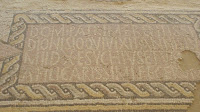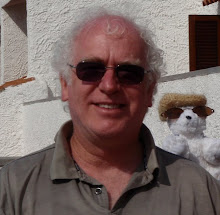















Beggars can't be choosers, so I shan't complain about the size of the car we received at Propiano, but it is probably worth noting, should you ever find yourself in a position where you'll need to rent a car, that it would be best to first specify what sort of car you would like. We were hoping for a very small car (a mini Cooper would have been nice...they appear to be quite popular here in Corsica) but, as luck would have it, the only car left for us upon our arrival in Propriano was a large Peugot van which, of course, is the absolute last choice for negotiating the narrow winding mountainous roads of Corsica and the narrow streets of the villages where everyone parks on both sides of the street at jagged angles. I paSs through these narrow passages with sincere hope that I won't make contact with anything. Ajaccio is not a large town, so it is very easy to find our way around on foot which means we can leave the car in the hotel garage where it is conveniently and safely out of harm's way. We visited the Musee Nationale de la Maison Bonaparte where Napolean was born and raised. The Bonapartes had come across from Tuscany as minor nobility in the 16th century and set themselves up in a lovely villa which, today is surrounded by buildings. Long before Napolean put it on the map as the capital of Corsica, the town of Ajaccio had humble beginnings as "adjacium" (nothing more than a resting place for sheep although Homeric legend might suggest that Ajax passed this way leaving a whisper of his name in his wake. It existed as a town as early as the 5th century and thrived until the Saracens wiped it off the map in the 10th century. It was rebuilt as a Genoese colony at the end of the 15th century, was captured by the French, and subsequently reclaimed by the Genoese. Napoleon created some hard feelings when he captured Ajaccio for France, but the modern Corsicans (at least the majority) appear to have forgiven him for he is depicted all over the town and in the street names and souvenir shops as a local hero and, perhaps more importantly, a native son of Corsica. There is actually an active "Bonapartist" party in Corsica, although, if I understand their policy correctly, their platform is separation from France...apparently, a political attache was shot dead in Ajaccio in 1998 in relation to some of the parliamentary passion over Corsica's political fabric. We also visited the Cathedral of Notre Dame de Misericorde. A very plain cathedral compared to the ones we saw in Malta, Sicily and Sardinia. The original plans of the Venetian architect were cut way back by the bishop who innaugurated its construction in 1554. When a subsequent bishop laid the final stone in 1593, he was so disappointed by the results of the severe budget cuts of his predecessor that he had inscribed over the door "if only I had the opportunity to lay the first stone". We also visited the church of St Erasmus which was originally a Jesuit church (circa 1617) but was given to the fisherman of Ajaccio (hence all the model boats therein).






































